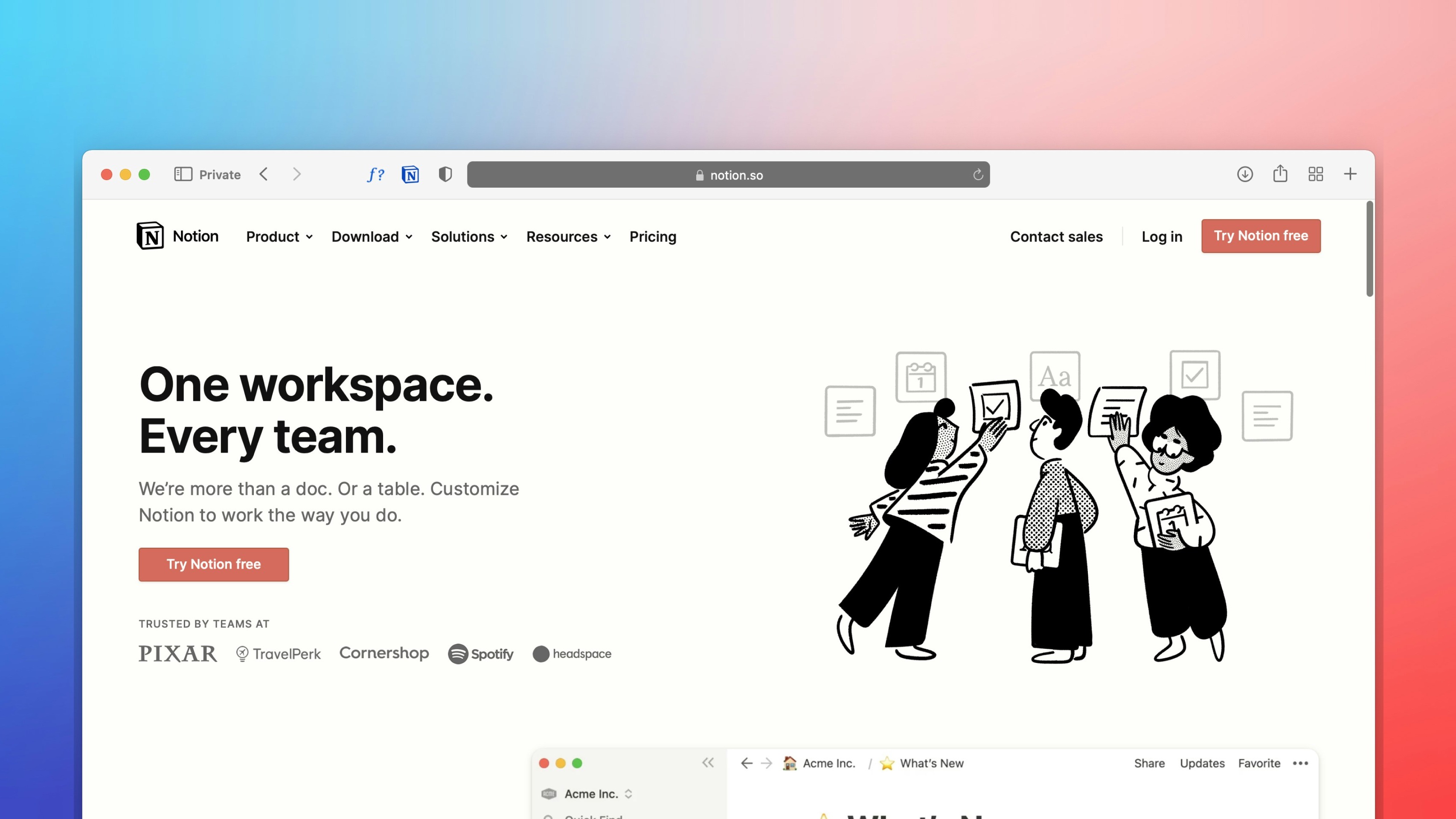 Freelancer tips
Freelancer tips Notion: What It Is, What It’s For, and How to Use It in Your Daily Life
Want to better organize your life and work? Notion can help boost your productivity. Click here to discover what this software is and what it’s used for.



Imagine this: you’re at a bustling networking event in Mexico City, surrounded by professionals and potential clients.
You only have a minute — or even just a few seconds — to make a lasting impression.
What do you say to stand out from the crowd?
This is where a strong elevator pitch comes into play.
Studies show that people form first impressions in seconds.
If you don’t make an impact quickly, you might miss out on valuable opportunities.
In this article, we’ll break down the art of creating an elevator pitch that not only captures attention but also leaves a memorable impression.
You’ll learn how to pinpoint your unique strengths, tailor your message for different situations, and deliver it with confidence.
By the end, you’ll have a powerful pitch ready to make waves in your freelance career, whether you’re pitching in person, over email, or on social media.
Let's dive in and transform how you introduce yourself to the world!
An elevator pitch is a brief, persuasive speech designed to spark interest in what you or your freelance business offers.
Imagine you’re in an elevator with someone who could become a valuable client or collaborator.
You have just a minute — sometimes even less — to make a memorable impression.
That’s where your elevator pitch comes in.
At its core, an elevator pitch is a short summary of your professional self.
The pitch should highlight your unique value proposition, which means clearly communicating what sets you apart from others in your field.
The purpose of an elevator pitch is twofold: to grab the listener’s attention and to convey your message efficiently.
As a freelancer, having a well-crafted elevator pitch can open doors to new opportunities by making it easy for potential clients or partners to understand what you do and why you’re the right fit for their needs.
A compelling pitch can:
Generate leads: It’s a great way to attract new clients or projects, especially in networking situations.
Build connections: Helps you make a memorable first impression that can lead to valuable relationships.
Clarify your brand: Forces you to think critically about your strengths and unique selling point (or USP), which can be useful for marketing and self-awareness.
When it comes to crafting an elevator pitch, the key is brevity.
Elevator pitches usually last about 30 to 60 seconds — just enough time to capture attention and leave a lasting impression.
This time frame is based on the idea that you should be able to deliver your message within the duration of a brief elevator ride, hence the name.
People’s attention spans are short, especially in fast-paced settings.
Within 30 to 60 seconds, you need to quickly capture interest and communicate your core message.
Plus, this timeframe allows you to be concise and focused, ensuring that you hit the main points without overwhelming your listener with too much information.
An effective elevator pitch is like a well-crafted story.
It has key elements that work together to grab attention and communicate your value succinctly.
For freelancers, here’s a clear breakdown of the four essential parts of a compelling elevator pitch:
This is where you start by introducing yourself — it’s your chance to make a positive first impression.
Keep it brief but engaging, with a strong hook
This sets the stage and helps the listener understand who you are straightaway.
Example: “Hi, I’m [Your Name], a freelance [Your Profession].”
Here, you identify a common problem or need that your target audience faces.
This part should resonate with your listener and show that you understand their challenges.
Highlighting a problem demonstrates that you’re aware of the challenges your audience faces, which sets up the next part where you explain how you provide a solution.
Example: “Many businesses struggle to create engaging social media content that truly reflects their brand’s personality.”
This is where you explain how you address the problem.
Be clear and specific about what you offer and how it benefits your audience.
Providing a solution shows your value and expertise.
It’s your chance to explain how you can make a difference and why you’re the right choice.
Example: “I help small businesses create tailored social media campaigns that enhance their online presence and drive customer engagement.”
End with a clear call to action.
This tells the listener what you’d like them to do next, whether it’s scheduling a meeting, visiting your website, or simply connecting with you.
A call to action provides direction and makes it easy for the listener to take the next step, turning your pitch into a tangible opportunity for further engagement.
Example: “I’d love to discuss how I can help your business grow. Can we schedule a quick call next week?”
Crafting an effective elevator pitch involves addressing key questions that help you quickly convey your value and grab your listener’s attention.
For freelancers, focusing on these three questions will ensure your pitch is clear, engaging, and impactful:
Who are you? Start by introducing yourself in a way that establishes your identity and expertise. This helps the listener understand who they’re speaking to and sets the stage for the rest of your pitch.
What problem do you solve? Clearly state the problem or need that your services address. This helps your listener relate to the challenge and understand why your work is valuable.
What is your solution? Explain how you address the problem and what sets you apart. This is where you showcase the benefits of your services and how they solve the issues identified.
A good elevator pitch is succinct, engaging, and tailored to the context.
It effectively communicates who you are, what you do, and why you’re valuable — all within 30 to 60 seconds.
For freelancers, having versatile pitches ready for different scenarios is key.
Here’s how to craft and customize your pitch, along with some examples and a basic template to help you get started:
Here’s a simple template you can customize for your needs:
Introduction: “Hi, I’m [Your Name], a freelance [Your Profession].”
Problem Statement: “Many [target audience] struggle with [common problem].”
Solution: “I [briefly describe what you do to solve the problem].”
Value Proposition: “For example, [mention a specific success story or result].”
Call to Action: “Let’s [suggest a next step, like scheduling a call or meeting].”
Focus on your unique value and how you stand out, and aim to make a memorable impression.
Example: “Hi, I’m Carla, a freelance social media strategist based in Guadalajara. I help local businesses boost their online presence with tailored social media campaigns that drive engagement and sales. Last year, I helped a restaurant increase its Instagram followers by 300% in just three months. Let’s connect and see how I can help your business grow.”
Emphasize how your services solve a specific problem for the client.
Example: “Hello, I’m Miguel, a freelance web developer specializing in e-commerce solutions. I’ve worked with several small businesses to create user-friendly online stores that enhance customer experience and increase sales. For instance, I redesigned a boutique’s website, leading to a 40% boost in online sales. I’d love to discuss how I can help streamline your e-commerce operations.”
Keep it brief and engaging, focusing on your main services and inviting further conversation.
Example: “Hi, I’m Ana, a freelance graphic designer who specializes in branding for startups. I create eye-catching logos and marketing materials that help new businesses stand out. My recent project included rebranding a tech startup, which resulted in a 50% increase in brand recognition. Feel free to reach out if you’re interested in elevating your brand’s visual identity.”
“Hello, I’m Ricardo, a freelance copywriter with a knack for crafting compelling content that converts. I’ve helped several companies enhance their online presence with SEO-friendly articles and engaging web copy. Recently, I wrote for a tech company, boosting their blog’s search engine ranking and driving more traffic to their site. Interested in elevating your content? Let’s chat.”
“Hi, I’m Laura, a freelance business consultant specializing in operational efficiency. I work with small businesses to streamline their processes and increase profitability. My recent client, a local retailer, saw a 15% reduction in operational costs within six months of implementing my recommendations. I’d love to explore how I can help your business achieve similar results.”
“Hi, I’m Sofia, a freelance graphic designer specializing in visual branding for local businesses. I create custom designs that capture your brand’s essence and engage your target audience. For instance, I recently developed a new brand identity for a local café, which led to a 20% increase in foot traffic. Let’s talk about how I can help your business stand out visually.”
An impactful elevator pitch relies on precise and engaging language to quickly convey your value.
For freelancers, choosing the right phrases can help you stand out and make a lasting impression.
Here are some key phrases to include in the different sections of your elevator pitch, with fresh examples and explanations to guide you.
“I’m [Your Name], and I offer freelance [Your Profession] services in [Location].”
“I’m [Your Name], a [Your Profession] who focuses on [Your Specialty].”
“Hello, I’m [Your Name], a [Your Profession] with expertise in [Your Field].”
These phrases quickly introduce who you are and what you do, establishing a clear starting point for your pitch.
“Many [specific type of client] face challenges with [particular issue].”
“A common problem in [industry] is [specific difficulty].”
“Businesses often struggle with [specific concern].”
Highlighting a specific problem shows that you understand your audience’s struggles and sets up the need for your solution.
“I provide [type of service] that addresses [problem].”
“My approach involves [specific method] to resolve [issue].”
“I offer [service] that helps [type of client] overcome [problem].”
Clearly explaining your solution demonstrates how you address the identified problem and offers tangible value.
“One recent project involved [client or example], which led to [result].”
“My work with [client or project] resulted in [specific achievement].”
“A recent client experienced [positive outcome] thanks to my [service].”
Providing concrete examples of past successes builds credibility and shows the real-world impact of your services.
“Let’s arrange a time to explore how I can assist with [specific need].”
“I’d be happy to discuss further how we can work together on [project].”
“Would you be interested in setting up a meeting to discuss how I can help with [service]?”
A clear call to action directs the listener on what steps to take next, facilitating potential engagement.
Crafting an effective elevator pitch means knowing not just what to include, but also what to avoid.
For freelancers, steering clear of these pitfalls can make your pitch more impactful and engaging:
Excessive detail: Providing too much information can overwhelm your listener and dilute your message.
Technical jargon: Using industry-specific terms that your audience might not understand can make your pitch confusing.
Monotone delivery: Speaking in a flat, unenthusiastic manner can make your pitch less engaging.
Negative language: Using phrases that downplay your skills or services can undermine your credibility.
Generic statements: Making broad, one-size-fits-all claims that don’t address the specific needs of your audience. The examples we’ve provided in this article are a starting point — your elevator pitch should be more unique.
Irrelevant information: Including details that aren’t pertinent to the listener’s interests or needs.
Standing out in an elevator pitch is crucial for freelancers looking to make a memorable impression.
Here’s how you can differentiate yourself and capture your audience’s attention with a pitch that truly shines:
Start with a hook: The beginning of your pitch is your chance to grab attention. A strong hook can pique interest and make your pitch more engaging, like a compelling statistic or a thought-provoking question, such as “Did you know that businesses with a strong brand identity see up to 20% more customer engagement?”
Know your USP (unique selling point): Clearly showcasing what makes you different from others helps your pitch stand out and positions you as a unique solution provide. For example, “I’m a freelance UX designer specializing in creating user experiences tailored specifically for e-commerce businesses, ensuring increased sales and customer satisfaction.”
Share a relevant success story: Providing a brief success story or case study demonstrates your ability to deliver results and makes your pitch more tangible and relatable, such as “For a recent client, a local restaurant, I designed a new website that increased online reservations by 40% within three months.”
Speak directly to your audience’s needs: Tailoring your pitch to address the specific needs or pain points of your audience makes it more relevant and impactful. For example, “If you’re struggling with an outdated website that’s not driving enough traffic, I can create a modern, SEO-optimized site that attracts more visitors and boosts your online presence.”
It can help to practice and memorize your elevator pitch, so you’re ready to go when the occasion calls.
But, while memorizing your pitch can help ensure you cover all key points smoothly, but it’s equally important to be flexible and conversational.
A perfectly-memorized elevator pitch can also sound robotic if it’s over-rehearsed — for a pitch to be compelling, it’s crucial to deliver it in a way that feels natural and authentic.
You can practice by asking friends and family to pretend to be potential clients in different industries and different scenarios, so you can tailor your pitch to them.
It helps to have some key points to mention that are particularly pertinent for certain industries, along with some more generic ones.
If you’re worried your general pitch is too long, try recording it to see whether it’s 30 to 60 seconds long.
Ultimately, a well-crafted elevator pitch is essential for freelancers aiming to make a lasting impression.
But, in addition to refining your pitch, managing your finances is crucial. DolarApp is an excellent tool for freelancers in Mexico, offering real-time exchange rates and currency conversion to streamline your financial planning.
Using DolarApp can help you stay on top of currency fluctuations and keep your finances in check, so you can focus on growing your freelance career.

The world has borders. Your finances don’t have to.
 Freelancer tips
Freelancer tips Want to better organize your life and work? Notion can help boost your productivity. Click here to discover what this software is and what it’s used for.

 Freelancer tips
Freelancer tips Project chaos? Learn how Trello can help you organize tasks and improve your productivity.

 Freelancer tips
Freelancer tips ClickUp can make any freelancer more productive. Discover what it is, how it works, and the advantages this tool offers you


